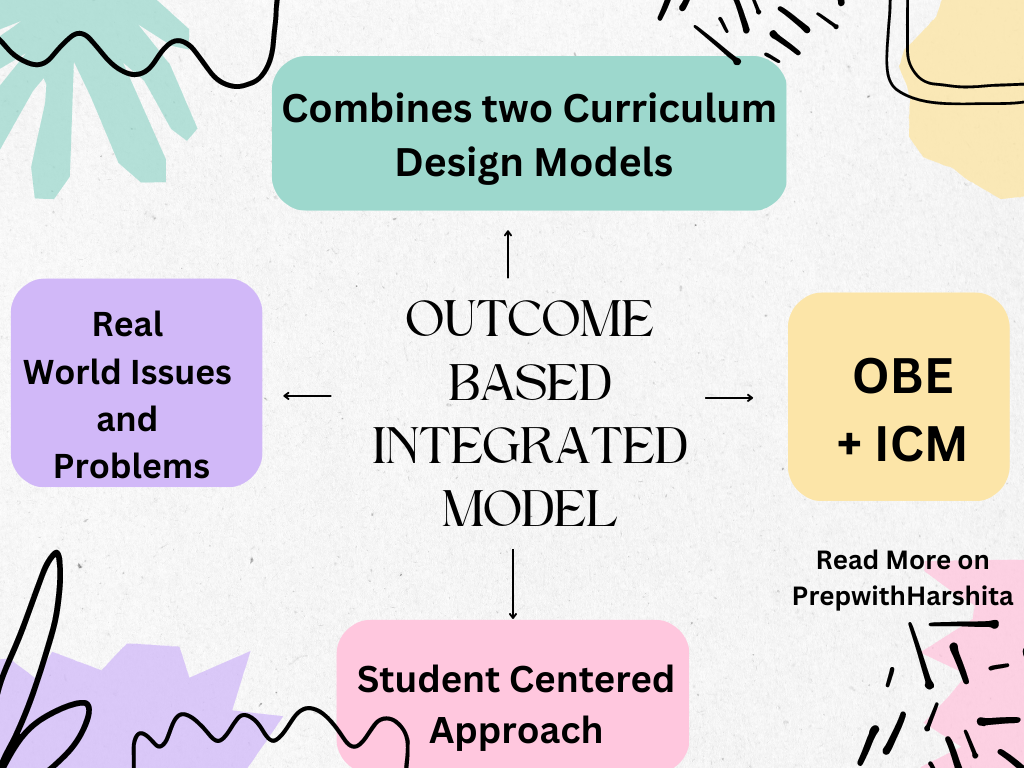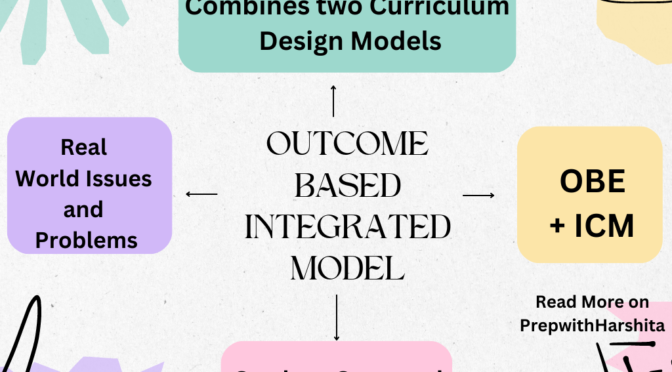The Outcome-based integrative model of curriculum design is an approach that combines two curriculum design models: the Outcome-Based Education (OBE) model and the Integrated Curriculum Model (ICM).
OBE Vs ICM
The OBE model focuses on defining learning outcomes or competencies that students should be able to demonstrate by the end of the course or program. This model emphasizes a clear alignment between the learning outcomes, assessment, and instruction. The ICM model, on the other hand, focuses on the integration of different subjects or disciplines into a cohesive curriculum that is centered on real-world issues and problems.
The integration of these two models in the Outcome-based integrated model of curriculum design aims to create a curriculum that is student-centered, practical, and relevant to the real world. In this model, the learning outcomes are defined based on the knowledge, skills, and attitudes that students need to succeed in their chosen field or profession. These outcomes are then used to develop assessments that measure students’ mastery of the competencies, as well as instructional strategies that are aligned with the outcomes.
The ICM component of the model is used to connect different subject areas and create a cohesive and integrated curriculum that is focused on real-world issues and problems. This involves the identification of themes or topics that are relevant to the students’ lives and that integrate different subject areas. For example, a theme could be “sustainability,” which could be explored through science, math, social studies, and English classes.
In the Outcome-based integrated model of curriculum design, instruction is designed to support the development of the identified competencies or learning outcomes while also incorporating the integration of different subject areas. This model emphasizes the use of authentic assessments that measure students’ ability to apply their knowledge and skills in real-world contexts.
Features of Outcome Based Integrated Model of Curriculum
The Outcome-Based Integrated Model of Curriculum Design is a student-centered approach that combines the features of two curriculum design models: Outcome-Based Education (OBE) and Integrated Curriculum Model (ICM). Here are some of the features of the Outcome-Based Integrated Model:
- Learning outcomes: The model focuses on the development of clear, specific, and measurable learning outcomes that define what students should be able to do or demonstrate by the end of the course or program.
- Alignment: There is a clear alignment between learning outcomes, assessment, and instruction. This ensures that assessments and instructional strategies are designed to support the achievement of the learning outcomes.
- Integration: The model integrates different subject areas into a cohesive curriculum that is centered on real-world issues and problems. This helps students see the connections between different subjects and apply their learning in real-world contexts.
- Authentic assessments: The model emphasizes the use of authentic assessments that measure students’ ability to apply their knowledge and skills in real-world contexts.
- Student-centered: The model is designed to be student-centered, with a focus on the development of competencies that are necessary for success in the students’ chosen field or profession.
- Relevance: The model emphasizes the relevance of the curriculum to the students’ lives and future careers. This helps to motivate students and increase their engagement with the learning process.
- Continuous improvement: The model emphasizes continuous improvement, with ongoing assessment and evaluation of the curriculum to ensure that it remains relevant and effective.
Overall, the Outcome-Based Integrated Model of Curriculum Design is a dynamic and flexible approach. It emphasizes the development of competencies that are relevant to students’ lives and future careers. It integrates different subject areas into a cohesive curriculum that is centered on real-world issues and problems. And it is designed to support student learning and achievement.
Also Read : Competency Based Model

Also Visit : Prep with Harshita

